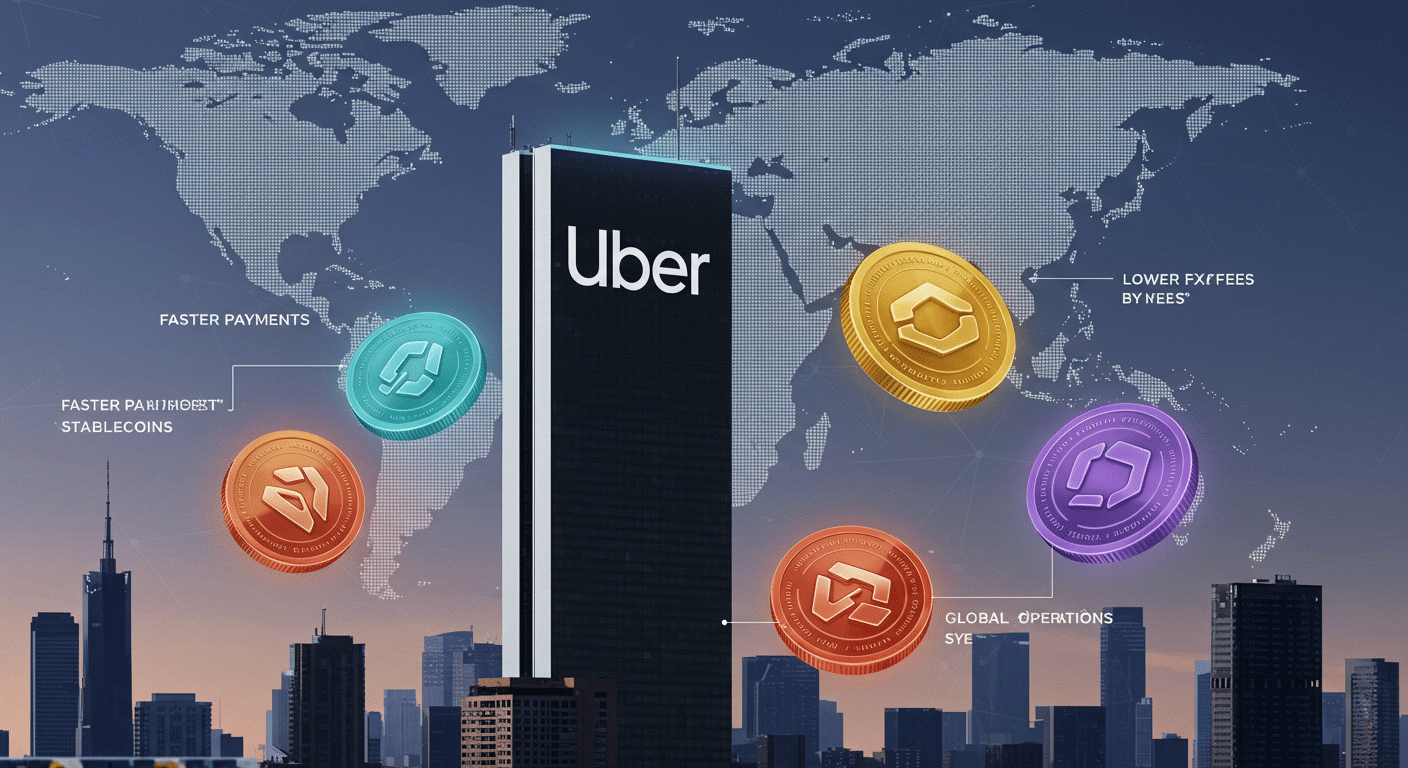Uber is examining stablecoin technology to enhance cross-border payment efficiency and reduce international transaction costs for its global operations. The company is currently in the study phase, assessing the feasibility of stablecoins as a financial tool. This move aligns with broader industry trends as more firms turn to digital payment innovations for operational efficiency.
Stablecoins Gain Attention from Uber for Global Payment Operations
Uber has started evaluating stablecoins due to their potential to lower the cost of moving money across borders. As the company is global, fast and low-cost payments are imperative, especially in emerging markets where the banking infrastructure may not be satisfactory. Uber aims to leverage stablecoins for both driver payouts and internal financial operations.

At the tech summit, the company’s CEO went ahead and confirmed the initiative, explaining how stablecoins are more practical in humans’ daily lives than volatile cryptocurrencies. Blockchain-based payments provide fast settlement speed, and stablecoins offer value stability compared to the speeds offered by blockchain-based payments. They offer fewer risks to businesses due to the fact that they have their peg to traditional fiat currencies.
The integration of stablecoins into Uber’s financial systems could improve liquidity and settlement times. This transition may also allow Uber to expand payment options for users in regions with limited access to banking services. If implemented, this would mark a significant advancement in Uber’s financial strategy.
Stablecoins Provide Practical Advantages for Businesses Like Uber
USDT and USDC are stablecoins pegged to the US dollar and backed up by cash or government bond reserves. These assets settle near instantly, offer consistent value, and are, therefore, perfect for international business usage. Uber considers these characteristics essential as it seeks to streamline its internal treasury processes.
The advantages of stablecoins are also attracting the attention of financial institutions. Fireblocks’ 2025 report revealed the fact that 90% of institutions are integrating stablecoins in their operations. ‘I believe there’s lots of excitement at the moment, especially because cryptocurrency transactions take much faster and much cheaper,’ said many who pointed to the growing adoption of these tokens.
Uber is not alone in exploring stablecoins for business improvement. Financial institutions have started working with companies such as Stripe so that stablecoin payments are enabled. Uber’s entry into this space underscores a broader shift toward digital currency solutions within major tech-driven enterprises.
Global Policies Push Stablecoin Adoption Forward
The U.S., Europe, and Asia have all seen supportive policy developments that increase the likelihood of stablecoin adoption. In the U.S., the GENIUS Act is an example of a bill introduced by lawmakers to specify exact rules regarding payment stablecoins. This act outlines requirements for issuers, offering regulatory certainty for companies like Uber.

However, Europe’s MiCA framework has offered both structure and guidance on how digital assets should be treated across EU member states. This, in turn, allows companies to make long-term plans for integrating stablecoin into their systems. For instance, Singapore and Pakistan are also showing interest in adopting stablecoin-friendly policies.
Uber benefits from this policy clarity as it explores ways to incorporate stablecoins into its systems. Uncertainty is reduced, and big companies can adopt new technologies with regulatory backing. Uber’s ongoing evaluation will likely consider these frameworks during the decision-making process.
FAQs
What is Uber planning with stablecoins?
Uber is studying stablecoins to streamline cross-border payments and reduce transaction costs.
Why are stablecoins relevant to Uber?
Stablecoins provide speed, cost efficiency, and value stability, making them ideal for global payments.
Are other companies using stablecoins?
Yes, companies like Stripe and major banks are already working to integrate stablecoins into their payment systems.
What are the regulatory developments around stablecoins?
New frameworks like the GENIUS Act in the U.S. and MiCA in Europe support the legal use of stablecoins.
When will Uber implement stablecoins?
Uber is in the evaluation phase, and no timeline has been announced for implementation.
Glossary of Key Terms
Stablecoin: A digital token that maintains value by being pegged to a stable asset like the U.S. dollar.
USDC/USDT: Popular stablecoins tied to the U.S. dollar and used for fast digital transactions.
GENIUS Act: A U.S. bill proposing rules for stablecoin issuers to ensure payment security and compliance.
MiCA: The European Union’s regulatory framework for digital assets and crypto tokens.
Liquidity: The ability to convert assets quickly into cash without affecting their value.



















































































































